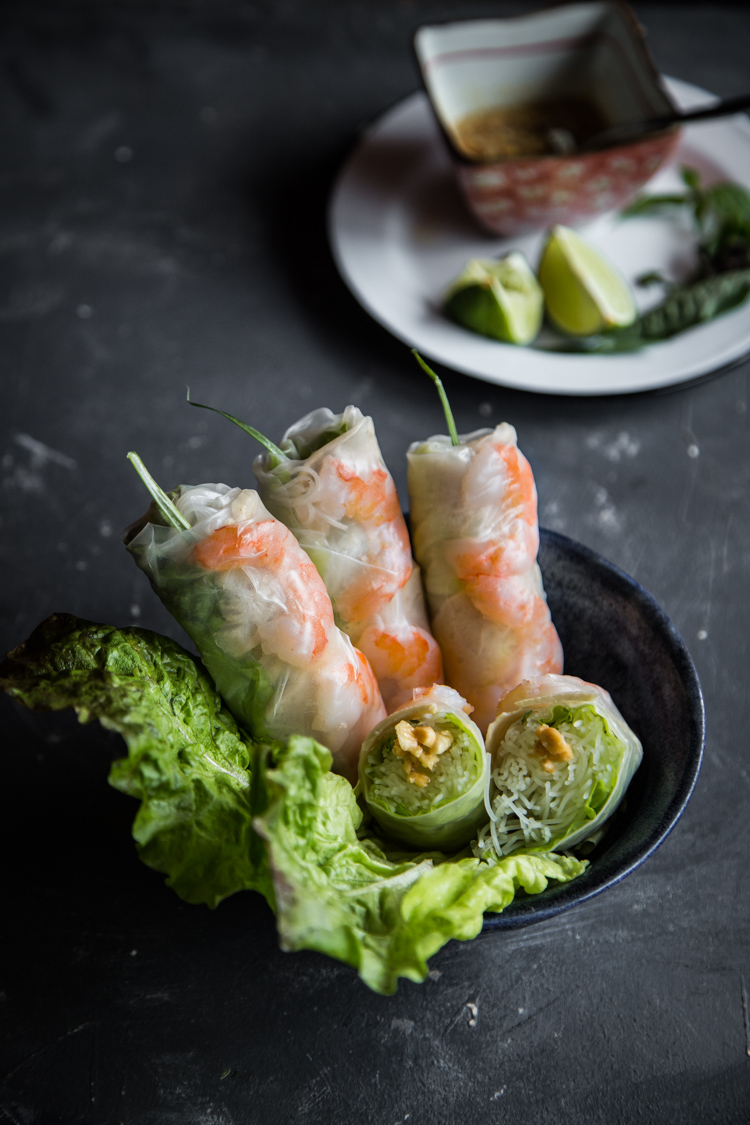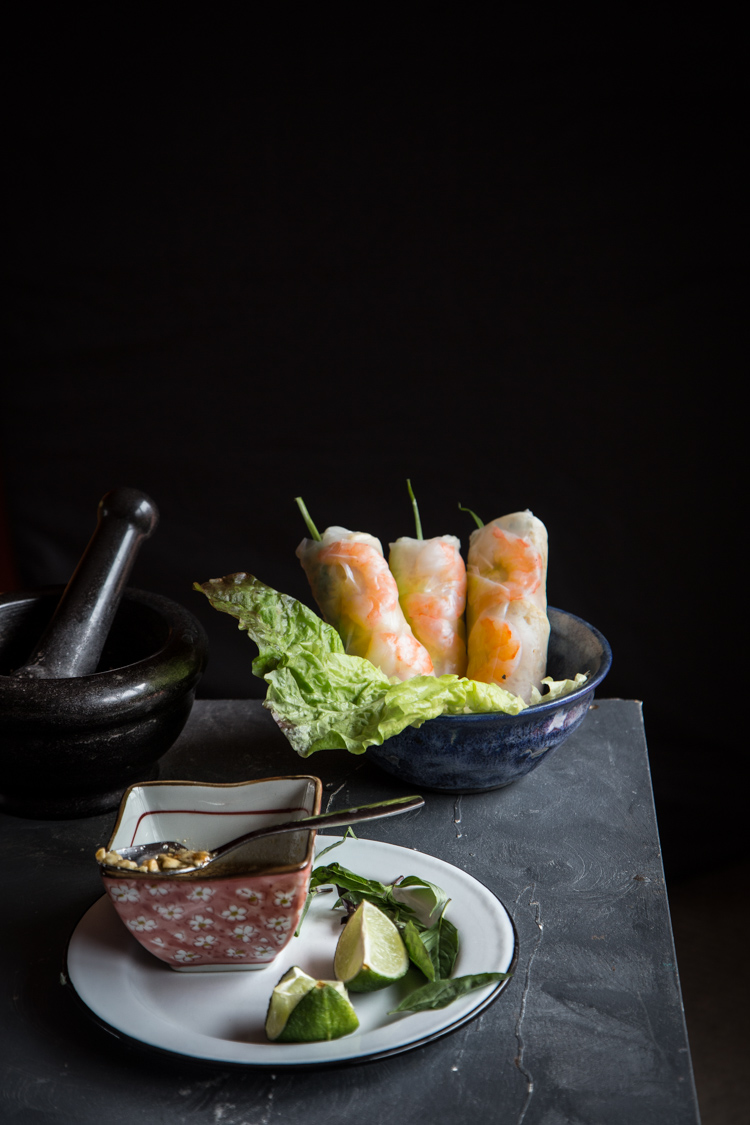This post may contain affiliate links. Please read our disclosure policy.
Learn how to make the best Vietnamese fresh spring rolls with savory umami dipping sauce. Perfect as an appetizer, snack, or a light meal.

I am happy to say that there are lots of great Vietnamese restaurants here in the U.S. When we go to Vietnamese restaurants, there are only two things that we eat most of the time. Pho noodles and the Vietnamese spring rolls. I told my hubby if it didn’t seem right if I didn’t learn how to make the spring rolls. After all, I like them so much. My mom loves them too.

The term spring roll and summer roll are used interchangeably by most people. You may be thinking that spring roll is always fried. The Chinese version of spring rolls or egg rolls is fried. Goi cuon isn’t fried. The fried version is cha gio, which has slightly different filling than goi cuon. I think the main bulk of the work was preparing the ingredients. Working with the delicate rice paper wasn’t as difficult as I thought either. The thin transparent wrap is surprisingly resilient (under my not-so-gentle hands).


Some like to eat it with hoisin sauce too. I don’t like it with hoisin sauce but I love this fish sauce dipping sauce!

Not a day without some sort of chili in my life !!!

Vietnamese Fresh Spring Rolls (Goi Cuon)
Ingredients
- 12 large unpeeled shrimp , fresh or frozen (thawed)
- 12 thin slices of Vietnamese ham (cha lua)
- 8- 10 oz dried rice vermicelli noodles
- 12 rice papers (about 8 inches in diameter)
- 12 lettuce leaves (trim off the hard stems)
- ½ cup packed fresh mint leaves
- 3-4 stalks of chives , cut into 12 thin slivers
Dipping sauce:
- ¼ cup fish sauce
- ¼ cup warm water
- Juice of 1/2 lime
- 2 Tbsp sugar or more if you like it sweeter
- 1 small clove garlic , minced
- 2 Tbsp chopped roasted peanuts
Instructions
- Mix all the ingredients for dipping sauce together and stir until the sugar dissolves. It can be kept in the refrigerator for up to 1 week max
- Use the knife to run through the back of the shrimp to remove the dark lines along the back. Keep the shells in tact, though (this is to prevent the shrimp from curling while being cooked). Bring a large pot of salted water to a boil. Drop in the shrimp (unpeeled), bring back to a boil, and cook just until pink and firm to the touch, 1 to 3 minutes. Lift out immediately with tongs or chopsticks and transfer to a plate to cool. Remove the shells when they are cool to touch. Set aside
- Bring the water back to a boil. Cook the noodles for 2 minutes (or follow package instruction), or until soft, and drain. Refresh with cold water, drain, and set aside
- Place a large bowl of warm water by your work area. Moisten a tea towel or cotton cloth thoroughly with water and lay it flat on the work surface. I didn't do this, but it is actually easier if you have a damp towel underneath as the rice paper won't be sticking to the plate. Working with 1 rice paper at a time, immerse the rice paper in the water. It will soften in less than 30 seconds. Lift it out and place it flat on the wet cloth
- Lay 1 piece of fresh lettuce and herbs on the lower portion of the wrap. Place a small handful of noodles on top of the lettuce, spreading them in a line across the lettuce. Place 2 shrimp halves (orange sides down) next to the lettuce. Top with two thin slices of cha lua. Fold both sides up. Place 1 sliver of chive in the middle then fold the bottom portion of the wrapper up and continue to roll up and gently tuck in as you roll up so that the roll is tight and nice
- Cover with a damp cloth or with plastic wrap, then repeat with the remaining rolls. Serve immediately, or set aside for up to 2 hours, covered with the damp cloth and plastic wrap to prevent the wrappers from drying out at room temperature. Serve on a platter or on individual plates, whole or cut crosswise in half
- Use a small spoon to drizzle on the sauce as you eat mouthful by mouthful 🙂
[disclosure]
